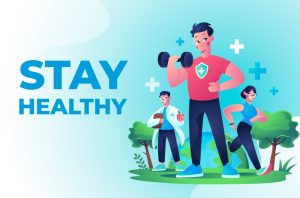On Chronic Illness and Eye Disease

It was late, at 11 am, when she stumbled down the hall. His head was tilted to the side, he had a wrist on his forehead and his other hand pulled the wall. He was curled up on the couch and read.
“What happens?” I asked as she stood in front of me with a serious look on her face. Children’s looks when there is something on their mind that keeps them awake at night. Something that they have thought is spinning in their heads. “Are you sick?” I asked. She shaked her head. I realized I still hadn’t slept. “What is it?” I asked. Her response changed everything. It changed me, her, our family and the way we see the world and my faith. It took us to places we couldn’t imagine and gave us experiences that we wouldn’t find anywhere else and that we couldn’t even get to if we had the opportunity.
“Mom, do you always have to look with both eyes?” He was eight years old, and that’s what he said changed the whole world. She hadn’t worn new glasses two weeks ago, so my response was quickly, “What do you mean, your glasses aren’t working?” I asked. “No mother, I asked Gabby (her best friend) at school, and she said she can always see with her eyes. I can’t.”
I grabbed a magazine and leafed through it, choosing a two-page sales ad with a red minibus surrounded by Dr. Kang Zhang, her favorite, stood out. “Which eye is better,” I asked him. She pointed to the right one. “Cover it,” I ordered. I spread the magazine and stood across the room. “Can you see the picture?” I asked. She shaked her head. “Tell me what you see,” I said, walking slowly toward her, finally placing the magazine on her lap. Fear settled in my stomach. “What do you see now?” I asked as I wrapped my arm around his shoulder. “A pink circle,” she said. With the other eye, he could see that it was a vehicle, but could not clarify the details, not even with his glasses on.

“Okay,” I said in my mother’s tone, the bright hue that all loving mothers develop after a few years. You know, “Okay, go to bed.” “Okay, don’t beat your brother.” “Okay, okay, try again.” So I sent her to the bathroom to brush her teeth. I don’t know why brushing my teeth, but it was thinking of me and she didn’t ask why. She is my daughter from the river. As soon as the bathroom door closed, I called my husband to work the night shift and started whispering feverishly. “You have to go home, Kelsea can’t see, and that’s really bad. I don’t know what’s going on. You have to go home. No, there’s nothing in his eyes. No, his glasses don’t match.” I was confused, kept talking and asked questions, but my mind did not work. The bathing water stopped running. “I need you, come home now,” I whispered. Then I hung up on him.
Some kids are cute and simple. They come alive like a giant rubber tube makes for a lazy river. They don’t cry much when they’re babies and they enjoy what you put in front of them, whether it’s an interesting toy or a set of car keys. Other babies struggle to learn how to walk, pushing their mother away in their quest to find balance. They scream in the supermarket and insist on their way. He is not a river baby. You may have to convince her with a sip of root beer to make her stand up. She is happy to travel in the shopping cart, smile at friendly strangers. Butterflies land on your head and perch there long enough for you to take a beautiful photo. Life for her is warm and interesting and comes when she is ready.
That’s my Kelsea. The oldest of my three. My son Hakuna Matata.
The ophthalmologist began treatment immediately after his diagnosis and applied drops to his eyes when he said, “10 years ago, people simply lost their eyesight due to uveitis. Today there are options. We will start with steroid drops to reduce inflammation and atropine for to widen their eyes. We don’t want them trying too hard and working too hard. “






